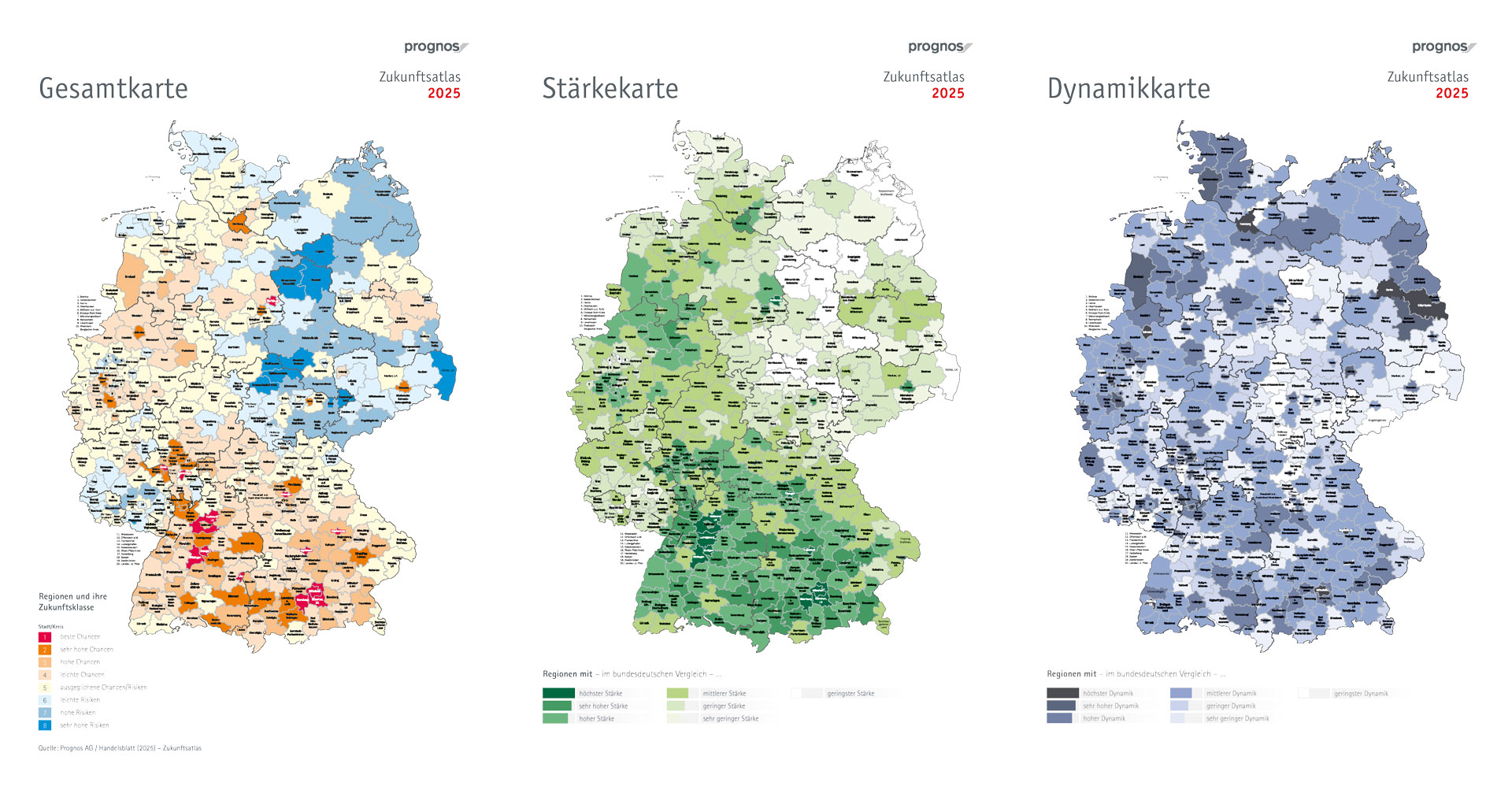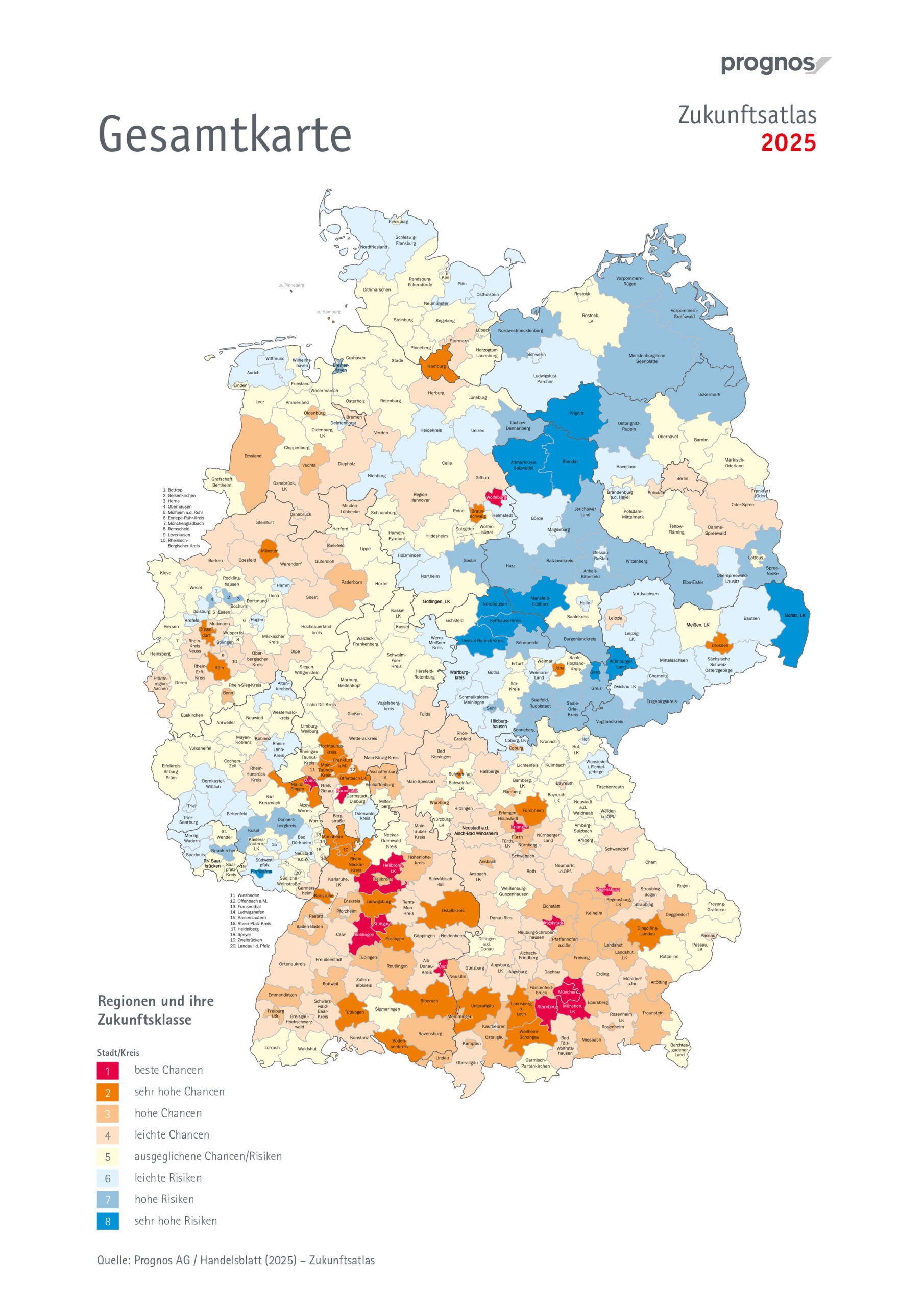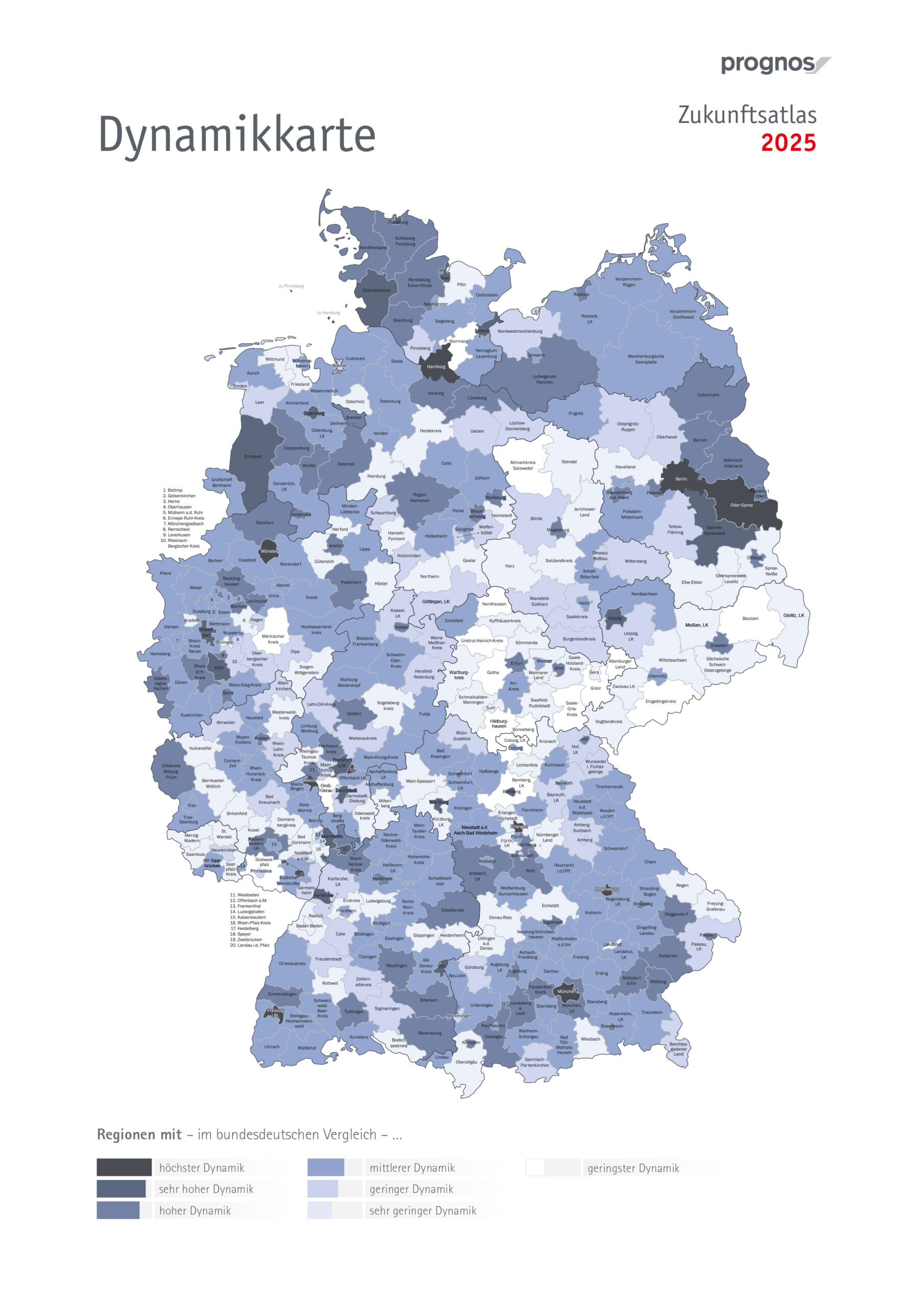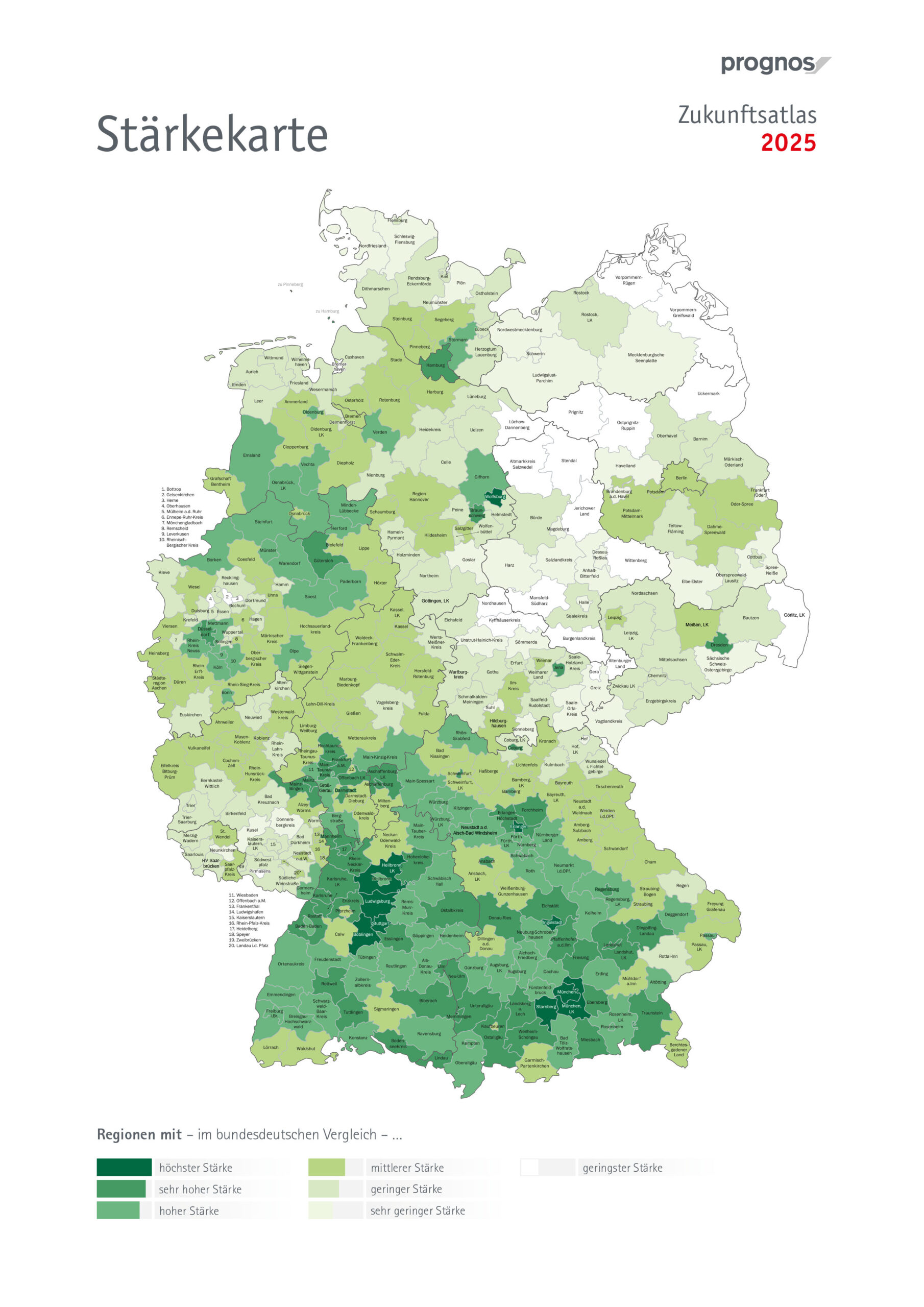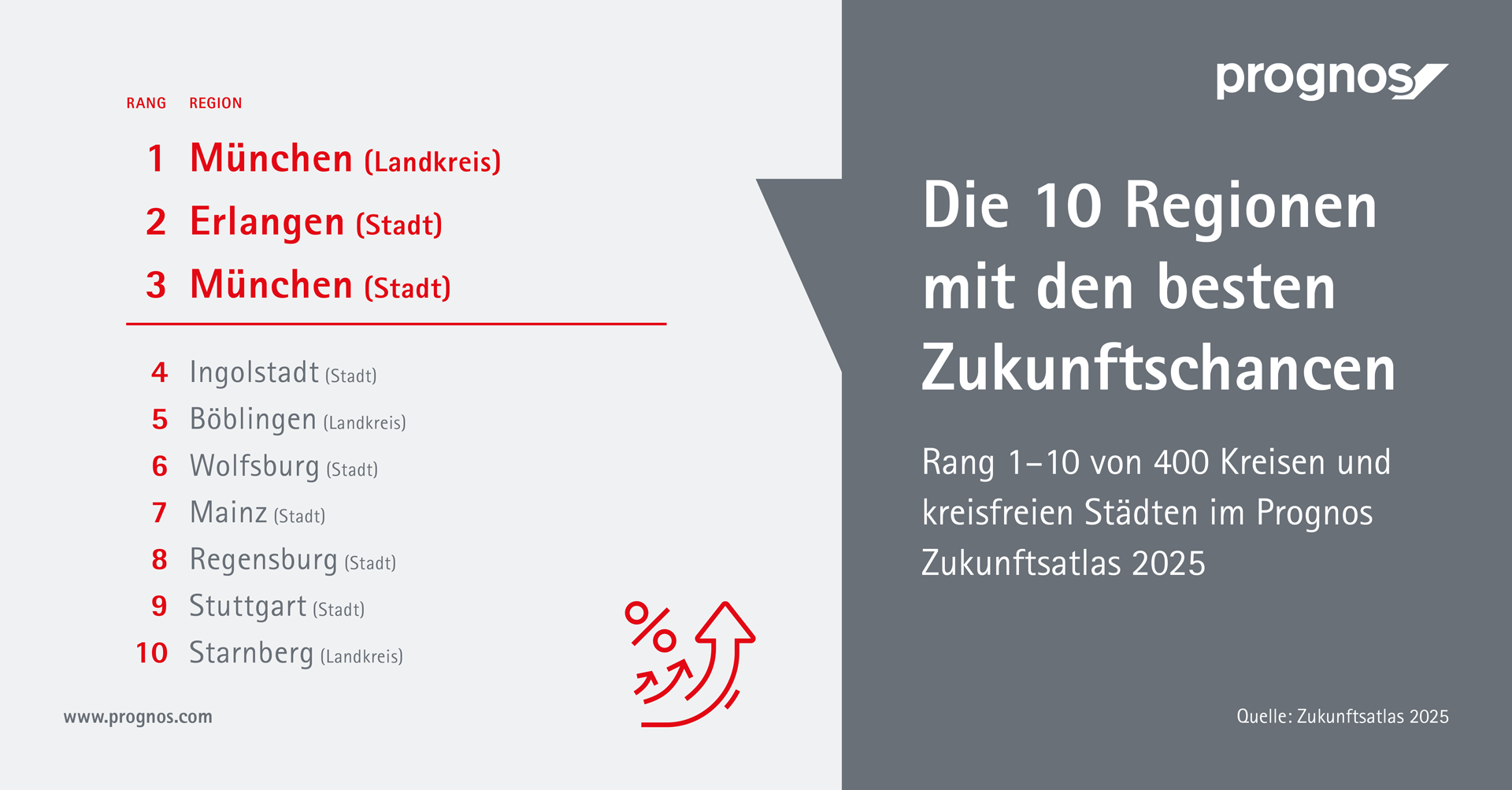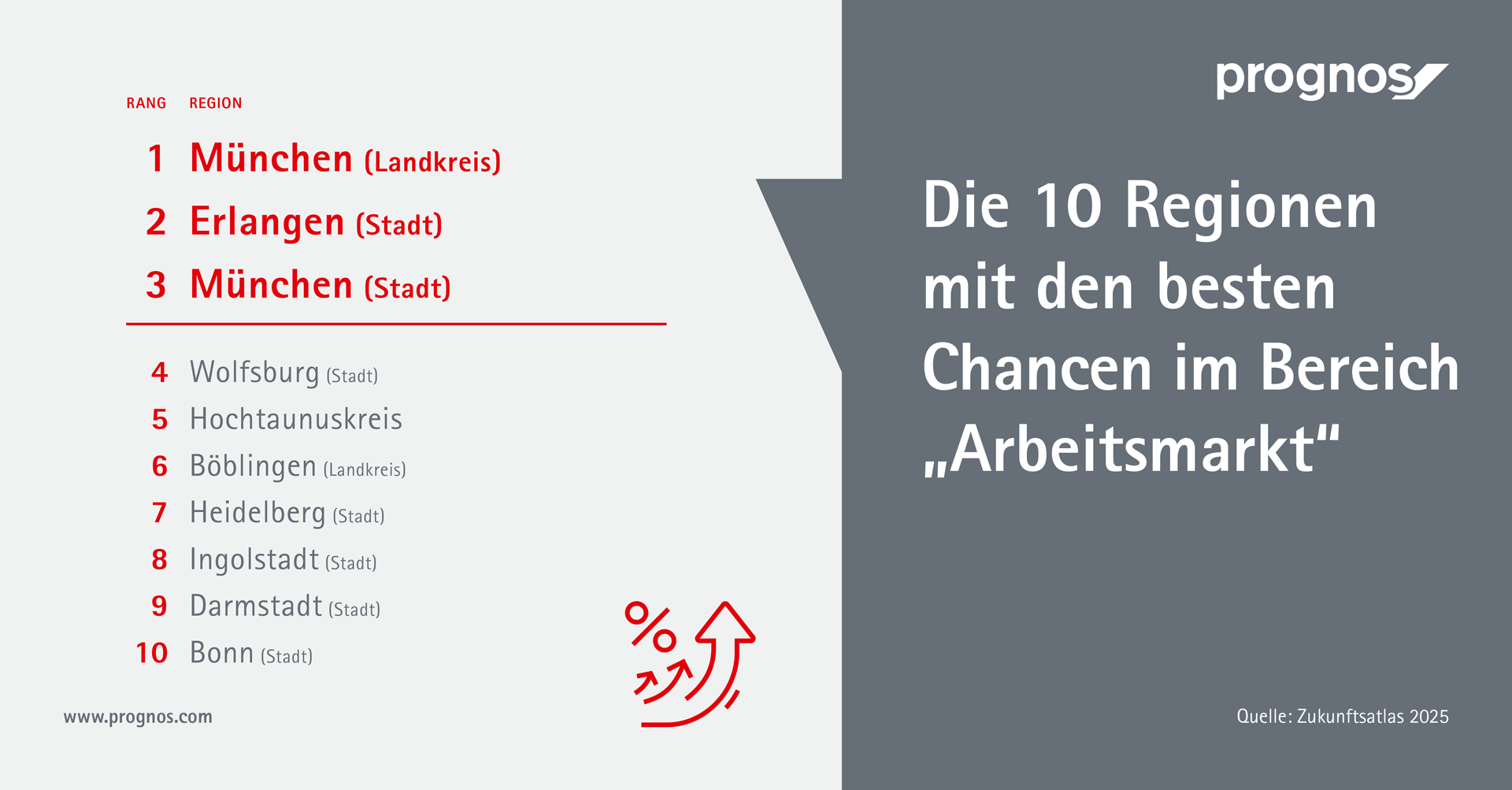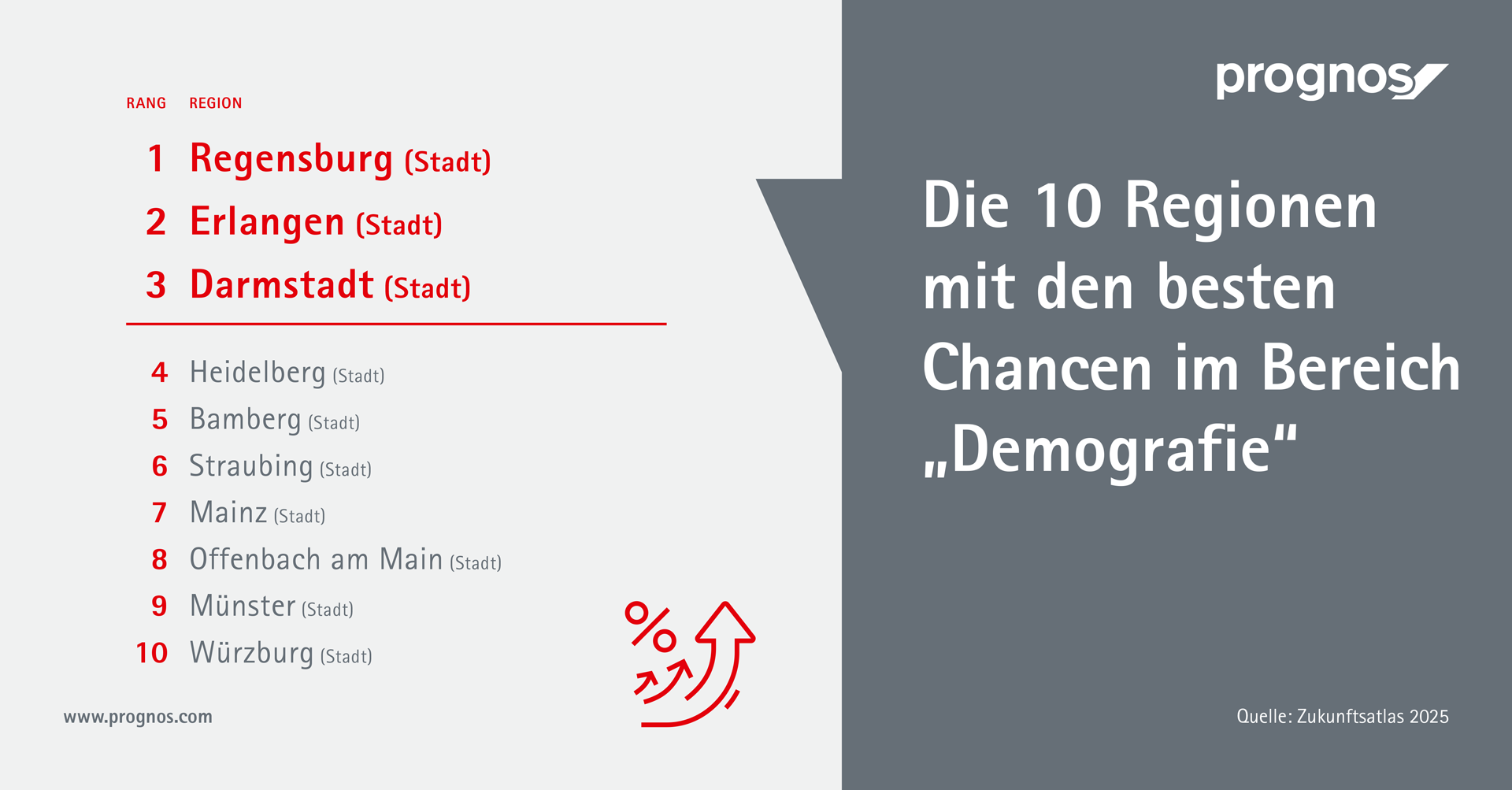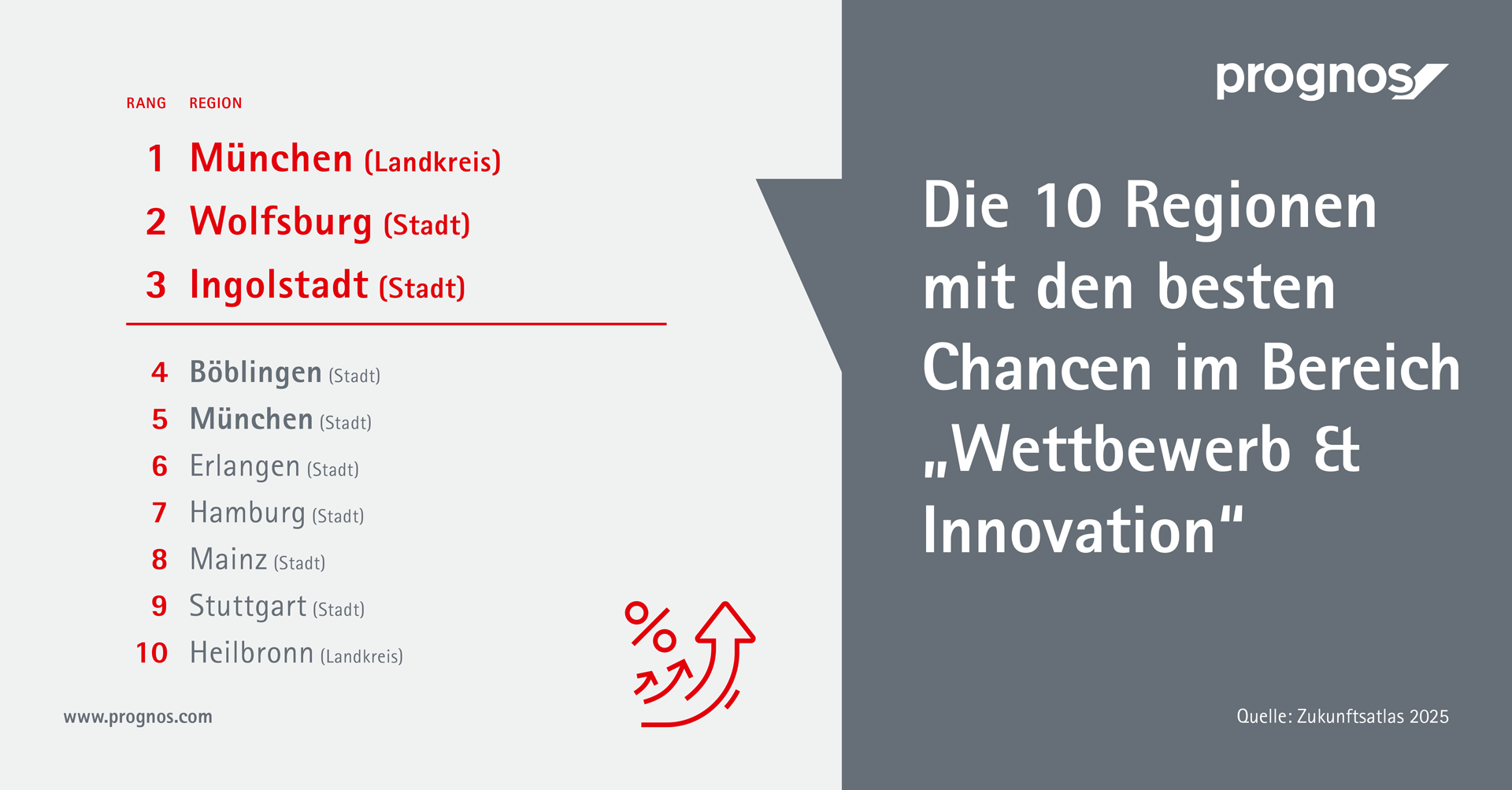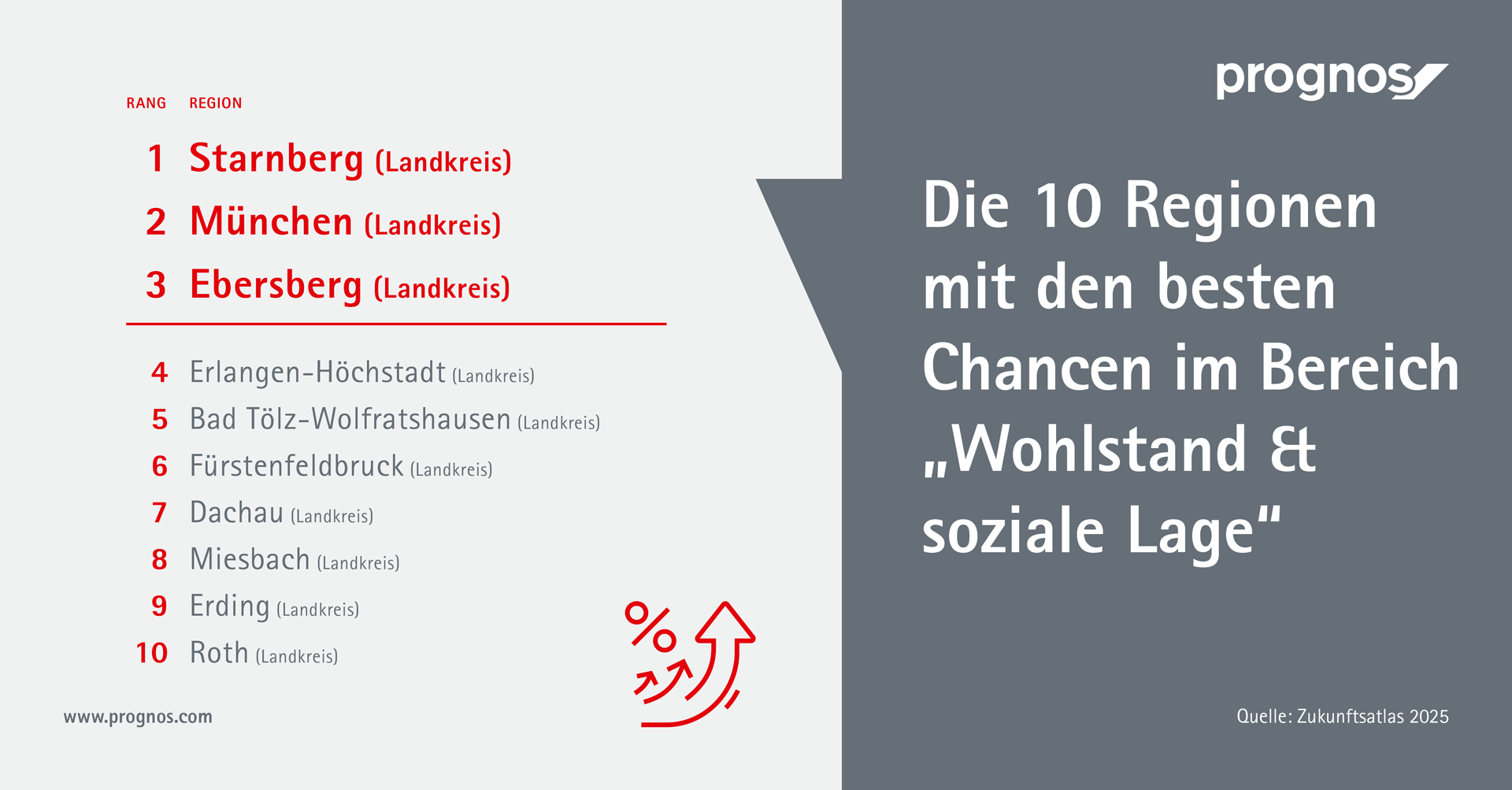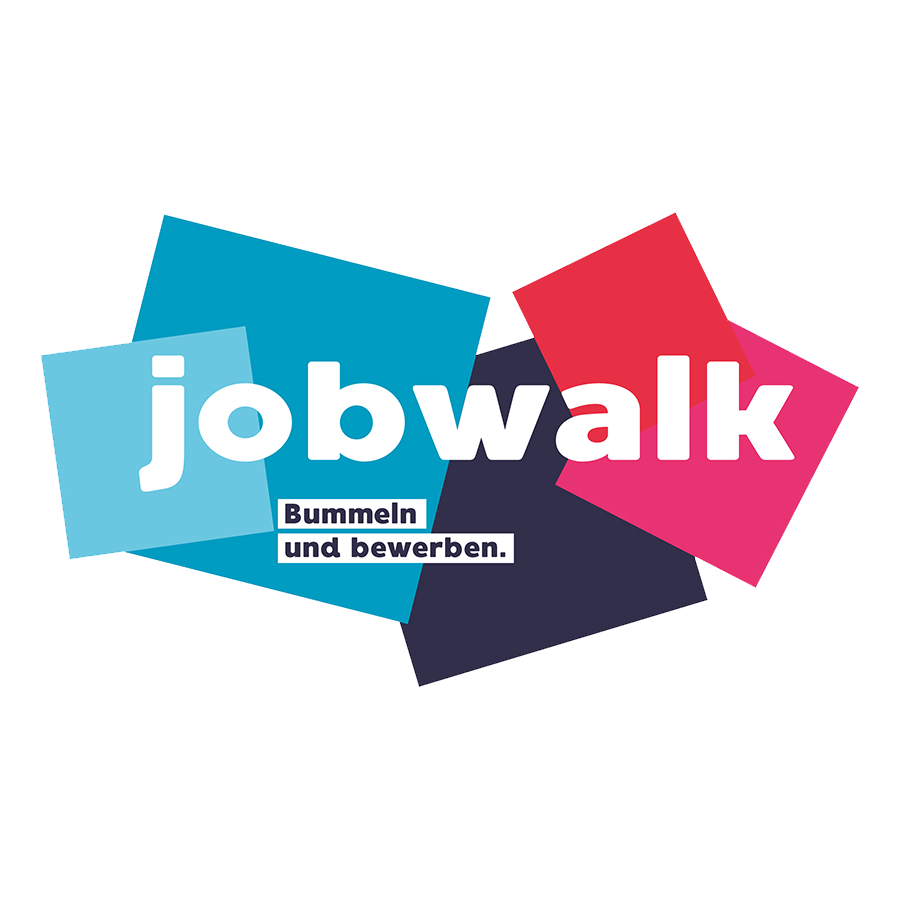The document presents the Prognos Zukunftsatlas 2025, which assesses the future opportunities and risks of German regions based on macro- and socio-economic indicators. The locations of the jobwalk events are all in the top group of the ranking of the 400 districts and independent cities in Germany. Erlangen (2), Regensburg (8) and Jena (24) take first place in the new federal states.
Prognos Future Atlas 2025: An overview
The Prognos Future Atlas 2025 assesses the future opportunities and risks of all 400 districts and independent cities in Germany based on 31 indicators.
- Der Atlas wird seit 2004 alle drei Jahre veröffentlicht und feiert sein 20-jähriges Bestehen.
- Bewertet werden vier Themenfelder: Demografie, Arbeitsmarkt, Wettbewerb und Innovation sowie Wohlstand und soziale Lage.
- Die Indikatoren sind auf Kreisebene verfügbar und unterteilen sich in Stärke- und Dynamikindikatoren.
Current economic situation in Germany
The German economy has been in recession since 2023, which is having a negative impact on many regions.
- Das Bruttoinlandsprodukt (BIP) sank 2024 um 0,2 % im Vergleich zum Vorjahr.
- Die Arbeitslosigkeit stieg in zwei Dritteln der 400 Regionen um mehr als 10 %.
- Nur 20 von 400 Kreisen konnten eine niedrigere Arbeitslosenquote als im Jahr 2022 aufweisen.
Federal state analysis: strengths and challenges
Bavaria and Baden-Württemberg are showing a positive trend, while other federal states such as Hesse and Saxony are experiencing challenges.
- In Bayern und Baden-Württemberg stiegen über 50 % der Kreise um mindestens zehn Ränge.
- Nordrhein-Westfalen zeigt ebenfalls Fortschritte, insbesondere im Ruhrgebiet.
– In Hesse, ten out of 26 districts deteriorated, while in Saxony ten out of 13 regions slipped into future risks.
Renewable energies as a location factor
The availability of renewable energies is increasingly seen as a decisive location factor for economic development.
- The demand for green electricity is growing, especially for the production of hydrogen and electromobility.
- The Future Atlas is being expanded to include two indicators that measure the production of renewable energies.
- Northern Germany in particular is performing strongly in terms of the expansion of renewable energies.
Innovative strength as the key to resilience
Innovative regions are more resilient to economic crises.
- Eight of the ten locations with the highest number of R&D staff are in the top 50 of the overall ranking.
- Regions such as Wolfsburg, Böblingen and Ingolstadt are leaders in innovative strength.
- A high capacity for innovation requires well-trained specialists and close networking with research institutions.
A look back at 20 years of the Future Atlas
The Future Atlas shows significant developments in rural regions over two decades.
- 31 regions have improved by more than 100 places, many of them in Bavaria and Baden-Württemberg.
- Rural regions are heterogeneous, with both strong and weak structures.
- Cities such as Leipzig and Dahme-Spreewald have successfully emerged from future risks.
Development opportunities in all room types
All regions in Germany have the potential to strengthen their innovative power and economic structures.
- Structural change, digitalization and demographic changes pose challenges.
- Large-scale settlements such as Tesla in Grünheide show how quick impulses can be set.
- Local political strategies are crucial for recognizing and utilizing local strengths.
Future Atlas 2025: opportunities and risks
The Prognos Zukunftsatlas 2025 assesses the future prospects of German regions using objective data and indicators.
- 400 districts and independent cities are divided into eight classes: 1 (best opportunities) to 8 (very high risks).
- The assessment is carried out using a future index based on 31 indicators.
- Indicators are divided into four subject areas: Demographics, Labor Market, Competition and Innovation, and Prosperity and Social Situation.
Methodology and indicators of the ranking
The methodology of the ranking is based on quantitative, statistical data without subjective surveys.
- 31 indicators are included in the future index, divided into strength and dynamic indicators.
- Strength indicators (e.g. unemployment rate) have a weighting of 1.0, while dynamic indicators with a double in strength have a weighting of 0.5.
- The analysis shows where there is potential for growth and a need for action.
Indicators and their weighting
The indicators are divided into strength and dynamic indicators and cover various subject areas.
- Demographics: fertility rate, proportion of young adults, job density.
- Labor market: Unemployment rate, proportion of highly qualified people, unfilled training positions.
- Competition & innovation: GDP per employee, start-up intensity, R&D personnel.
- Prosperity & social situation: purchasing power, crime rate, municipal debt burden.

